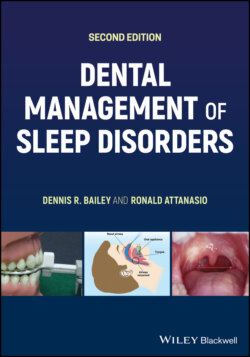Читать книгу Dental Management of Sleep Disorders - Ronald Attanasio - Страница 16
Prevalence of Sleep Apnea
ОглавлениеAn example of the most often cited study on the prevalence of sleep apnea is from a 1993 study that was published in the New England Journal of Medicine [10]. In this study of 602 people, it was determined that 24% of men and 9% of women are at risk for sleep‐related breathing disorders (SRBDs). When this same group also had daytime hypersomnolence, the prevalence of sleep apnea was determined to be 4% of men and 2% of women. A more current study in 2013 found that there was an increase in prevalence of SRDB that ranged from 14 to 55% based on age, sex, and severity of the apnea hypopnea index (AHI) [11]. This study looked at age groups by their sex and found that in men the prevalence was 10% (age 30–49) and was 17% (age 40–70). In women, the prevalence was 3 and 9%, respectively for the same age groups. The prevalence in this case was based on an AHI of 15 or greater. When an AHI of 5 or more was considered, in ages 30–70, along with daytime sleepiness, the prevalence was determined to be 14% in men and 5% in women.
Since 2013, there have been other studies that have determined the prevalence of SRDB. The facts from two other studies that are significant merit consideration.
1 A study commissioned by the American Academy of Sleep Medicine (AASM) determined that approximately 80% or 23.5 million people who are at risk for sleep apnea in the United States are undiagnosed [12]. Estimation of the prevalence of obstructive sleep apnea (OSA) is at 12% or 29.4 million adults in the United States. Based on this, it was determined that this is having a major impact on the healthcare system. The estimated annual cost per individual in 2015 who is undiagnosed is $6366 as compared to the healthcare costs for someone who is diagnosed and being treated was $2105.
2 It has been determined that worldwide the prevalence of sleep apnea now approaches nearly one billion (936 million) people [13], based on a review of the data available from 16 countries and considering people age 30–69. When considering those who have more moderate to severe sleep apnea the prevalence is 425 million. The impact was most significant in China and then the United States followed by Brazil and India.
